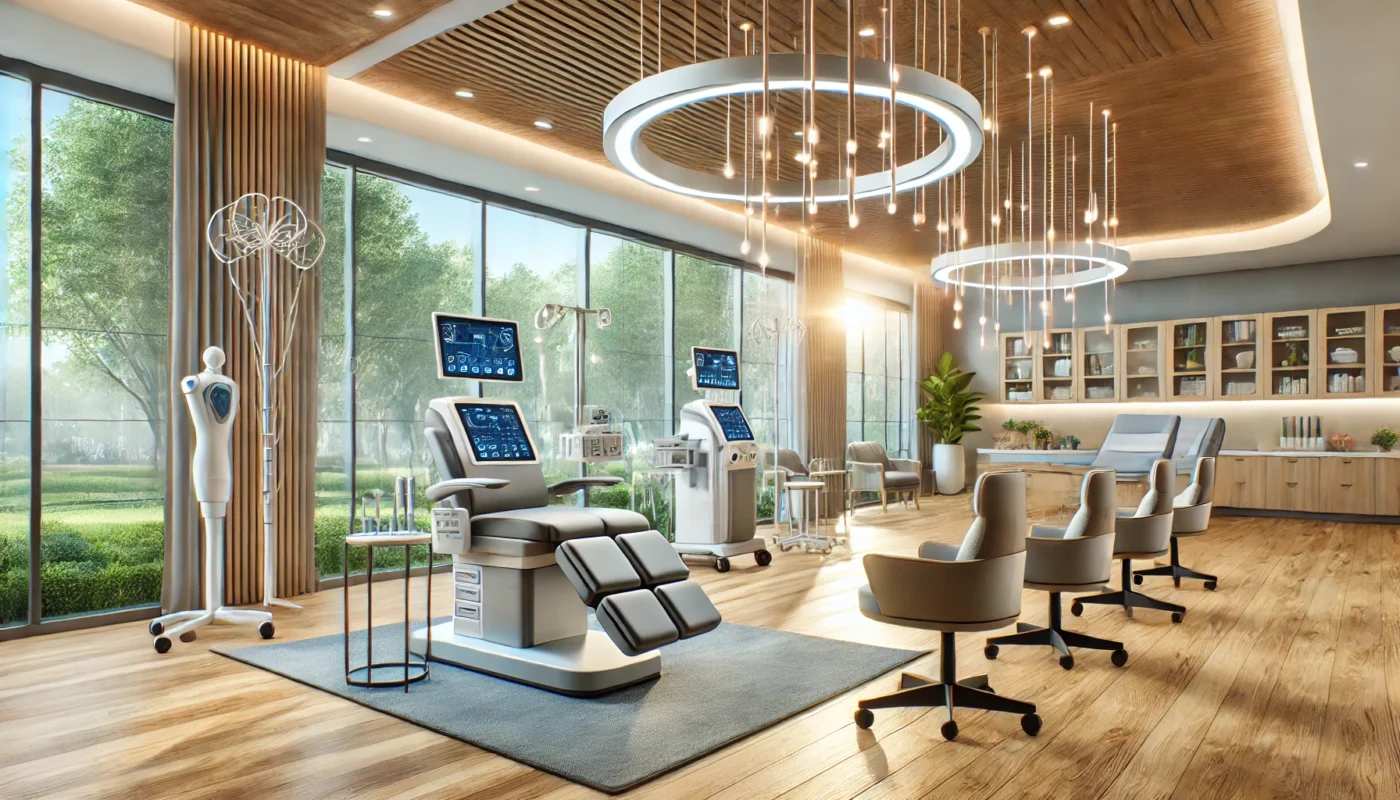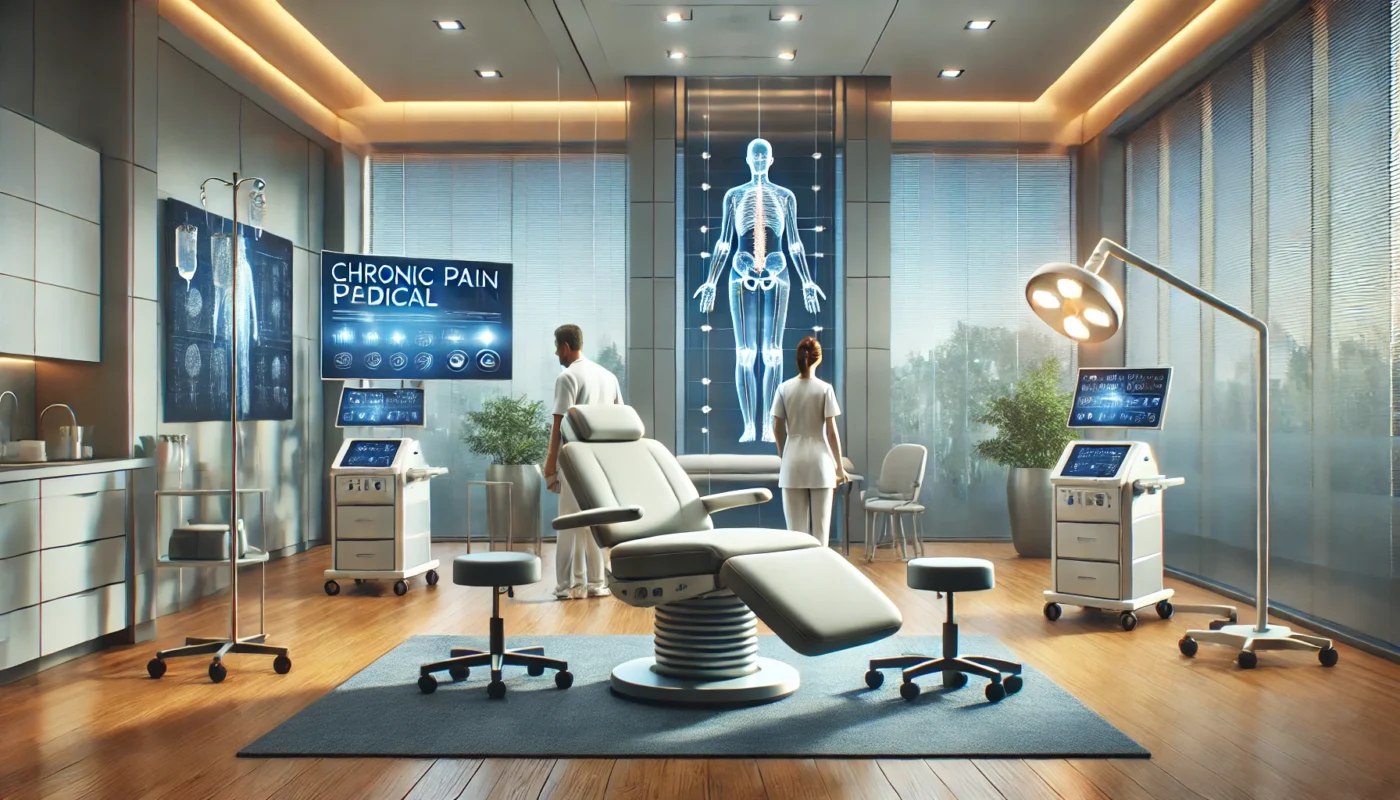Before diving into the treatments, it’s essential to understand what CRPS is. Complex Regional Pain Syndrome is a chronic pain condition typically affecting one limb after an injury. It’s characterized by prolonged or excessive pain and changes in skin color, temperature, and swelling in the affected area.
You may also like: Innovative Procedures for Chronic Pain Relief
CRPS is divided into two types:
- CRPS-I: Occurs without a confirmed nerve injury. This type is more common and often follows minor injuries.
- CRPS-II: Previously known as causalgia, occurs with a confirmed nerve injury. This type is less common but can result in more intense symptoms.
Understanding these types is crucial for determining the appropriate treatment approach, as they can present differently in patients.
Causes and Risk Factors
The exact cause of CRPS is not entirely understood, making it a challenging condition to diagnose and treat. However, it often follows trauma or surgery. Some risk factors include:
- Genetic predisposition may play a role, although research is ongoing.
- A history of other chronic pain conditions can increase susceptibility.
- Psychological factors such as stress and anxiety might exacerbate symptoms.
Symptoms and Progression
Symptoms can vary widely among individuals, making CRPS notoriously difficult to diagnose. Common symptoms include:
- Severe pain that is disproportionate to the initial injury.
- Changes in skin color, temperature, and swelling in the affected area.
- In some cases, emotional and mental health challenges arise due to chronic pain.
The condition may progress through different stages, each with varying intensity and symptomatology, requiring adaptive treatment strategies.
Diagnostic Criteria for CRPS
Diagnosing CRPS can be challenging due to its varied symptoms and similarities with other conditions. The Budapest Criteria is widely used to diagnose CRPS, which includes:
The Budapest Criteria
The Budapest Criteria require:
- Continuing pain disproportionate to any inciting event.
- At least one symptom in three of the four following categories: Sensory, Vasomotor, Sudomotor/Edema, and Motor/Trophic.
Thorough Clinical Examination
A thorough examination by a complex regional pain syndrome specialist is crucial for accurate diagnosis. This includes:
- Comprehensive patient history to understand the onset and progression.
- Physical examination focusing on sensory and motor function.
- Diagnostic tests like MRI or bone scans to rule out other conditions.
Importance of Early Diagnosis
Early diagnosis is critical in managing CRPS effectively. The sooner it’s identified, the more successful treatment outcomes can be. Delayed diagnosis can lead to worsening symptoms and a more challenging treatment process.

Treatment Approaches for CRPS
Medication for CRPS
Medication forms a cornerstone of CRPS management. The aim is to control symptoms and improve quality of life. Common medications include:
- Pain Relievers: Over-the-counter options like ibuprofen or stronger prescription medications can help manage acute pain.
- Antidepressants: Such as amitriptyline, which can help manage chronic pain by altering neurotransmitter levels in the brain.
- Anticonvulsants: Medications like gabapentin are used to alleviate nerve pain by dampening overactive pain signals.
Additionally, corticosteroids may be prescribed to reduce inflammation, and bisphosphonates are sometimes used to address bone density issues related to CRPS.
Physical Therapy and Occupational Therapy
Physical therapy is vital in maintaining mobility and function in the affected limb. Techniques often include:
- Gentle Movement: Promotes circulation and reduces stiffness, crucial for preventing muscle atrophy.
- Desensitization Therapy: Helps patients gradually adapt to touch and pressure, which can be hypersensitive in CRPS.
- Mirror Therapy: An innovative approach that uses a mirror to trick the brain into perceiving movement in the affected limb, which can reduce pain perception.
Occupational therapy can also assist in adapting daily activities to reduce pain and improve function, focusing on ergonomic adjustments and adaptive tools to maintain independence.
Alternative and Holistic Therapies
Exploring alternative approaches can complement traditional treatments:
- Acupuncture: This ancient practice may help reduce pain and improve circulation, providing a non-pharmacological pain relief method.
- Biofeedback: Teaches patients to control bodily processes that are typically involuntary, such as heart rate or pain perception, promoting a sense of control over their condition.
- Mindfulness and Meditation: Promotes relaxation and stress reduction, which can be beneficial in managing chronic pain by reducing the psychological impact of CRPS.
Other holistic approaches include yoga, tai chi, and aromatherapy, which can support overall well-being.
Interventional Treatments
For severe cases, interventional treatments may be considered:
- Nerve Blocks: Injections that can help manage pain by blocking nerve activity, offering temporary relief for intense pain episodes.
- Spinal Cord Stimulation: Involves implanting a device that sends electrical impulses to the spinal cord, reducing pain perception and potentially improving mobility.
Other options include sympathectomy and ketamine infusions, each with specific indications and potential benefits.

Who Treats CRPS?
A multidisciplinary team approach is often required for managing CRPS effectively. Key specialists may include:
Pain Management Specialists
Offer comprehensive pain management plans tailored to the individual’s needs, often coordinating with other healthcare providers.
Neurologists
Assist in diagnosing and managing nerve-related issues, ensuring that the neurological aspects of CRPS are addressed properly.
Physiotherapists
Focus on restoring movement and function, using a range of techniques to maintain mobility and prevent complications.
Psychologists
Provide support for coping with the emotional aspects of chronic pain, offering cognitive-behavioral therapy and other strategies to improve mental health.
Regular consultations with these professionals ensure a well-rounded approach to managing CRPS, addressing both physical and psychological needs.
Practical Strategies for Managing CRPS
For those living with CRPS, practical strategies can make a significant difference:
Stay Active
Engage in gentle exercises to maintain mobility. Activities like swimming or walking can be beneficial without putting too much stress on the affected limb.
Balanced Diet
Nutritional support can enhance overall health and support healing. A diet rich in anti-inflammatory foods can help reduce symptoms and support recovery.

Support Groups
Connecting with others facing similar challenges can provide emotional support and practical tips. Sharing experiences and strategies can empower individuals and reduce feelings of isolation.
Stress Management
Techniques such as yoga, meditation, and deep breathing exercises can reduce stress, which may exacerbate CRPS symptoms.
Adaptive Techniques
Learning to modify daily tasks can help manage symptoms and maintain independence, using tools and strategies to minimize discomfort.
Conclusion
CRPS is indeed a complex condition, but with the right approach, its impact can be significantly reduced. Combining medication, physical therapy, and alternative therapies, along with support from a multidisciplinary team, can provide a comprehensive strategy for managing CRPS. By staying informed and proactive, individuals can navigate the complexities of CRPS and lead a fulfilling life despite the challenges.
In your journey to understand and manage CRPS, remember that knowledge is power. Stay engaged with the latest research, consult with specialists, and explore all available treatment options to find what works best for you. Embrace a holistic approach, integrating medical and lifestyle interventions to optimize your quality of life.
Further Reading:
Complex Regional Pain Syndrome Part 2: Management and Treatment
Complex Regional Pain Syndrome
Complex Regional Pain Syndrome Part 2: Management and Treatment
CRPS, Complex Regional Pain Syndrome, chronic pain, pain management, physical therapy, occupational therapy, alternative therapies, interventional treatments, Budapest Criteria, pain relief, holistic health, stress management, support groups, medication, neurological health, coping strategies
Important Note: The information contained in this article is for general informational purposes only, and should not be construed as health or medical advice, nor is it intended to diagnose, prevent, treat, or cure any disease or health condition. Before embarking on any diet, fitness regimen, or program of nutritional supplementation, it is advisable to consult your healthcare professional in order to determine its safety and probable efficacy in terms of your individual state of health.
Regarding Nutritional Supplements Or Other Non-Prescription Health Products: If any nutritional supplements or other non-prescription health products are mentioned in the foregoing article, any claims or statements made about them have not been evaluated by the U.S. Food and Drug Administration, and such nutritional supplements or other health products are not intended to diagnose, treat, cure, or prevent any disease.

